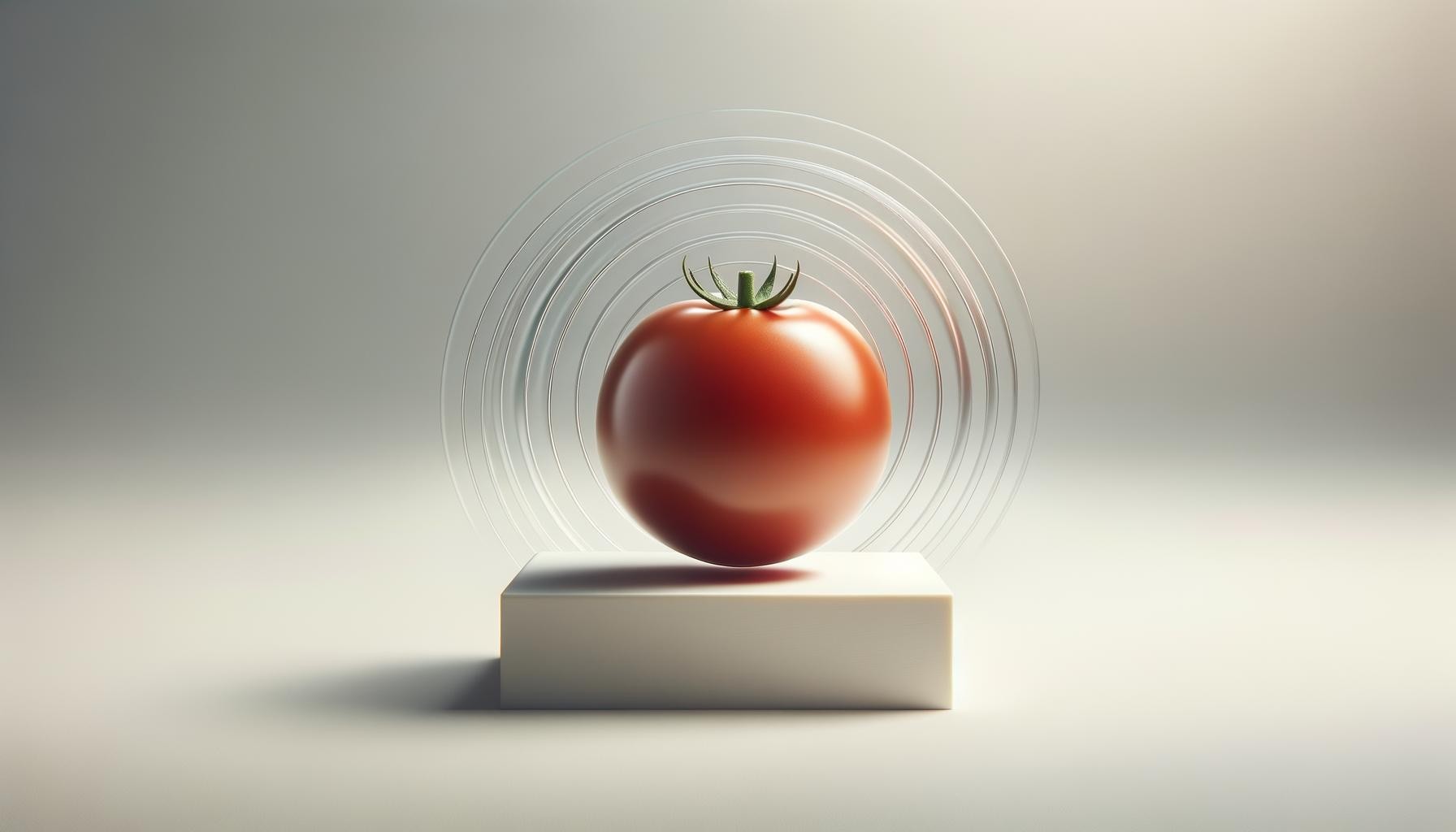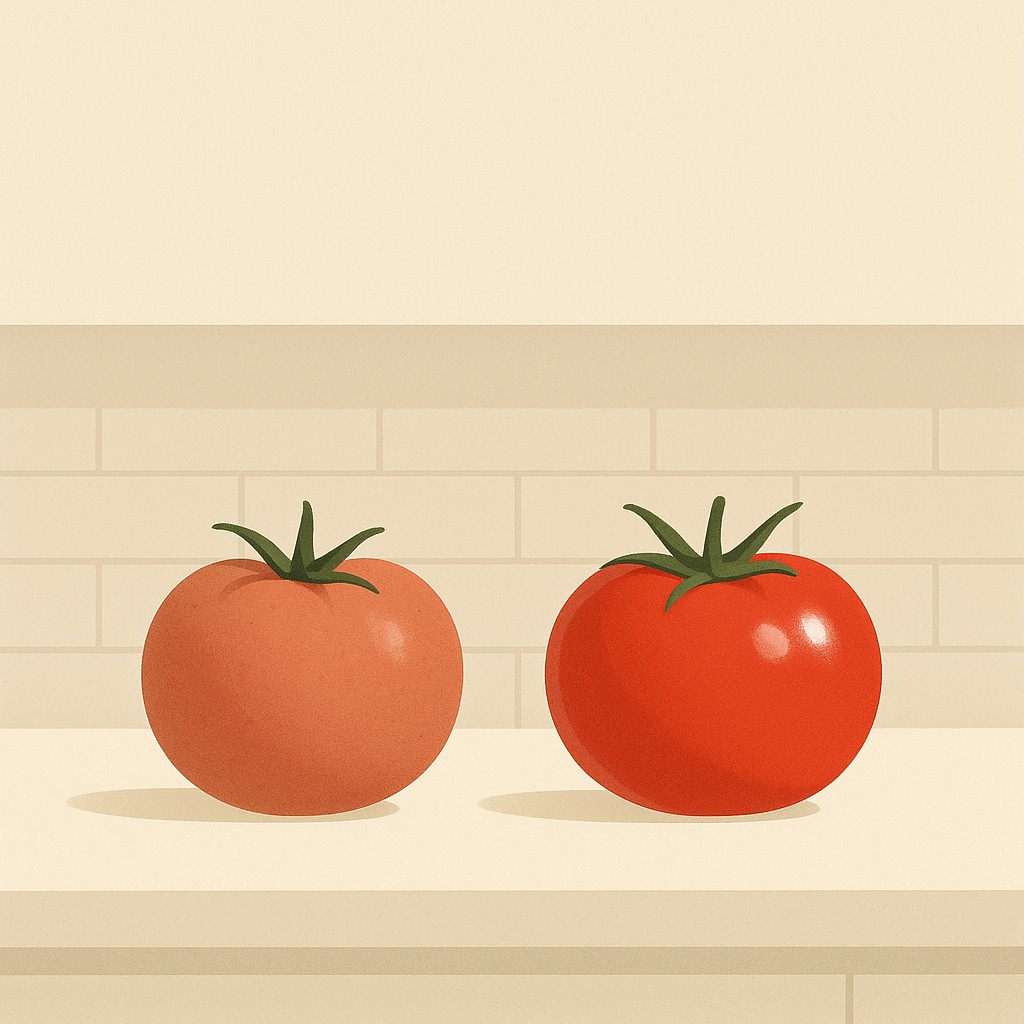The Tomato Upgrade Principle: How to maximize small purchase ROI
The Tomato Upgrade Principle: How to maximize small purchase ROI

The Tomato Upgrade Principle: Maximize Small Purchase ROI
It happened somewhere between the canned beans and the vinegars—a row of tomatoes, nearly identical except for the price. I’d reached for the reliable, slightly bland $1-per-pound option before my partner stopped me. “It’s literally a dollar more, and these taste way better. We eat tomatoes almost every day.”
I flinched, partly out of habit, partly because doubling up on produce felt reckless. Did the difference really add up over a month? In my head, it was an equation: marginal joy, marginal cost. But her phrasing was a gut check. It’s $1 more, and they taste way better. Then it’s something I get to enjoy every day. Suddenly, the question became how to maximize small purchase ROI—the absolute impact of a $1 upgrade that shifted our whole week’s meals.
The hesitation didn’t come out of nowhere. If you’d met me back in my solo years, frugality wasn’t a mindset. It was survival, one-dollar decisions at a time—no buffer, no “splurging,” just making numbers work.
Classic engineer behavior, honestly. Give me a spreadsheet and I’ll break out price-per-ounce logics, running mini-optimizations on tasks that barely move the needle. It’s a weird form of misplaced rigor—exacting analysis, laser-focused on tiny spends, even when that means eating flavorless tomatoes for the fifth day in a row.

But here’s what finally hit me: not every transaction deserves the same scrutiny. There’s a real cost to treating $1 and $1,000 like they warrant equal analysis. If you’ve ever caught yourself trading joy for efficiency—or pouring mental energy into saving cents—this is for you.
Joy doesn’t always scale with cost, and neither does ROI—lean on impact-based spending decisions instead. Sometimes, a modest upgrade compounds into daily satisfaction, while “big” purchases carry more uncertainty and fuss. The switch is this: spot the low-cost, high-frequency upgrades where absolute impact matters and let yourself spend—while saving deep analysis for major, rare bets. Over time, tracking percentage-savings on little items just means you lose out on daily dividends. The tomato upgrade isn’t about giving up rigor. It’s about deploying attention where it genuinely pays off.
The Mechanics of Compounding Upgrades
Most of us grew up thinking in percentages. Save 10% here, shave 5% there, let the spreadsheets tell you which decision is “better.” But the truth is, percentage savings can warp your sense of value. We all know the trap—someone might drive across town to save $10 on a $20 item, but that same $10 off a $1,000 purchase barely registers, purely because of relative framing (percentage framing warps how we value absolute savings). It feels logical, but in practice, it’s not about efficiency—it’s about illusion unless you normalize ranges to avoid bias.
Here’s what finally made me drop the habit. Small, repeatable upgrades aren’t percentage plays; they maximize small purchase ROI through compounding. If you upgrade the tomatoes you eat every day, that’s a direct bump to joy, delivered over dozens of mornings and meals. By focusing on the absolute impact—asking, “Does this $1 measurably improve my day?”—you start unlocking value that stacks up. The good coffee, the sturdy spatula, the fresh breakfast roll: they don’t just add up in cost, they multiply in satisfaction because you collect their benefit over and over. It sounds soft, but sometimes joy is the highest ROI. I like my systems tight, but I like my breakfast even more.
Big-ticket items, though, are a different beast. They deserve careful analysis because the stakes are higher and the variables multiply. Maintenance, lifespan, hidden headaches. When I buy a phone or pick a laptop, I want to sweat the details. Warranty, specs, total cost of ownership. Unlike daily upgrades, I might only make these decisions every couple of years. And I’ll admit, I’ve spent way too much time picking apart $30 purchases because old habits die hard. But high-dollar decisions carry more uncertainty than most small daily choices, so that’s where rigor actually pays off—not nickel-and-diming the grocery cart.
If you’ve ever felt brain-tired after shopping, you’re not alone. The real pain is analysis paralysis—so stop overanalyzing small purchases that drain attention and time and leave you second-guessing. When you go all-in on maximizing every choice, the cost is often post-purchase regret and less loyalty—which only gets worse with more complexity and overthinking (maximizing magnifies regret and drains satisfaction). It’s easy to burn out on complexity, chasing precision where it doesn’t matter.
There’s a better heuristic. Prioritize repeatable purchases with clear, absolute impact. Reserve deep scrutiny for big, infrequent bets. That’s how you sidestep the trap and start collecting daily returns.
Small aside here: A while back, I actually crossed wires at the grocery store trying to apply this. Got so focused on “optimizing” that I spent ten minutes weighing onions, deciding between the loose kind and a mesh bag. Price difference? Maybe 40 cents. Walked out without buying vinegar, which was one of two actual things I needed. Sometimes the urge to optimize eats the brain.
A Simple Framework for Intentional Upgrades
Start with two dead-simple questions for any routine purchase. First, does this actually improve your day in a way you can feel? Second, do you get that benefit over and over, through repetition? You’re looking for absolute life impact, not theoretical “value,” and you want upgrades with repeatability—things you touch daily, weekly, or whenever habits make them matter. That’s it: measurable improvement and frequency. If both hit, the decision isn’t worth dragging through layers of analysis.
To optimize everyday purchases, look at groceries, mornings, and all those tiny rituals we run on autopilot. Tomatoes are the classic example, but it’s the same for coffee beans, good yogurt, or a reliable mug—anything you start your day with. Decide once, and every morning is better for it. I used to pause, calculate, maybe even Google for the “best value” before picking. Now, if it’s something I repeatedly use and it adds joy, I default to quality. I still don’t spend carelessly, but I spend intentionally. Daily upgrades make routines glow, and the ripple is worth far more than the dollar difference.
Here’s the micro-script I tell myself—a mental shortcut for fast decisions and ruthless prioritization for daily choices: If the price is under my “don’t sweat it” threshold, and it makes a daily habit noticeably better, I default to the upgrade. No spreadsheet needed, no background stress. Trust the repeatable improvement.
Quick tangent: I finally caved and bought decent socks last winter after years of tolerating the scratchy, thin ones you get when sweating every purchase. $14 later and what a mood shift—my mornings genuinely improved. The tiny, recurring comfort was worth far more than the price difference, and I wish I’d made the switch years ago.
Let deep analysis live where it pays off. When the decision is big, rare, and full of unknowns. That’s where research, comparisons, and waiting periods still matter—phones, appliances, even rice bags when buying bulk. Most of us already make our small, routine purchases on autopilot anyway, since low-involvement decisions get handled automatically to keep life moving. That autopilot deserves upgrades, not endless math. Don’t waste rigor where habit rules—save it for big bets, and let quality slip quietly into your daily patterns.
Tackling Objections and Setting Smart Constraints
I get the worry. Isn’t this just lifestyle creep in disguise? It used to set off alarm bells for me too. Here’s how I changed my thinking—by setting a cap and focusing only on repeatable joy, not blanket upgrades. You pick a small, intentional budget for these micro-splurges, then forget the rest. Percentages start to matter less than the felt outcome, especially when you draw a line for what “enough” looks like. If it doesn’t make your day better, it doesn’t make the list.
Here’s where guardrails help. I made a monthly bucket for these micro-upgrades, and most days I default to the usual options—unless a tiny extra (like slightly better coffee) seriously moves the needle. Don’t overthink it. The point is that a daily lever, like better coffee, has way more impact spread across a month than some random “deal” you’ll barely notice.
Still skeptical these micro-upgrades do anything? Run the math: one week of better tomatoes—just a dollar more each trip—translates to noticeably brighter meals, better snacks, and an uptick in mood every single lunch. Even good yogurt can flip your morning from tolerable to actually enjoyable. Tiny cost, compounding returns.
I’ll say it straight. Now that I can make these choices, I’m incredibly grateful. There were plenty of years where every extra dollar burned and upgrades weren’t on the table. This approach only clicks once you have some headroom, so if you’re still in the scrappy stage, honor that. The seasons change.
You own the process. Small, repeatable upgrades clear brainspace, slash analysis paralysis, and genuinely boost your everyday quality of life. Let the little stuff lift you.
Your Upgrade Action Plan
So, what does this actually look like in practice? Here’s the simplest way I’ve found to turn these insights into daily movement. First, pick three routine items you interact with every day—coffee beans, breakfast tomatoes, those socks you always rotate in. Upgrade one or all three, but set a modest cap (say, $5 or $10 per week for “micro upgrades”). Then, create your own default rule: “If it’s under $5 and I touch it daily, I buy the better one, no spreadsheet.”
Each week, evaluate small purchases ROI—does it feel noticeably better, or was it a dud? Keep what works, drop what doesn’t, repeat. You want this system light enough to stick, even when life speeds up. I can’t say I never slip back into over-analysis—old habits lurk—but the baseline has shifted.
Eventually I got a salary, but the real upgrade was seeing these choices as levers for everyday satisfaction, not just equations.
Redirect your optimization reflex where it counts by adopting a calm cadence to prioritize across daily and quarterly rhythms. Save your detailed breakdowns for rare, high-stakes purchases—phones, appliances, anything that carries risk and complexity. For daily staples, let your new defaults drive the show. Your energy is finite. Spend it where the outsized wins live. The freedom of a smart default is that it works in the background, letting you collect daily dividends with zero extra fuss.
If you’re building or using AI and want less friction creating posts, docs, or updates, try our app to generate contextual content fast, with goals, constraints, and tone you define.
This is just post 1 of 7 in the Spending for Optimizers mini-series. I’m laying groundwork here so you can build momentum with small wins, not just ideas. If you start today, you’ll make your next week smoother—and set the stage for deeper, smarter upgrades as we go. Stick around; we’re redesigning daily joy by shifting where our attention lands.
Enjoyed this post? For more insights on engineering leadership, mindful productivity, and navigating the modern workday, follow me on LinkedIn to stay inspired and join the conversation.
